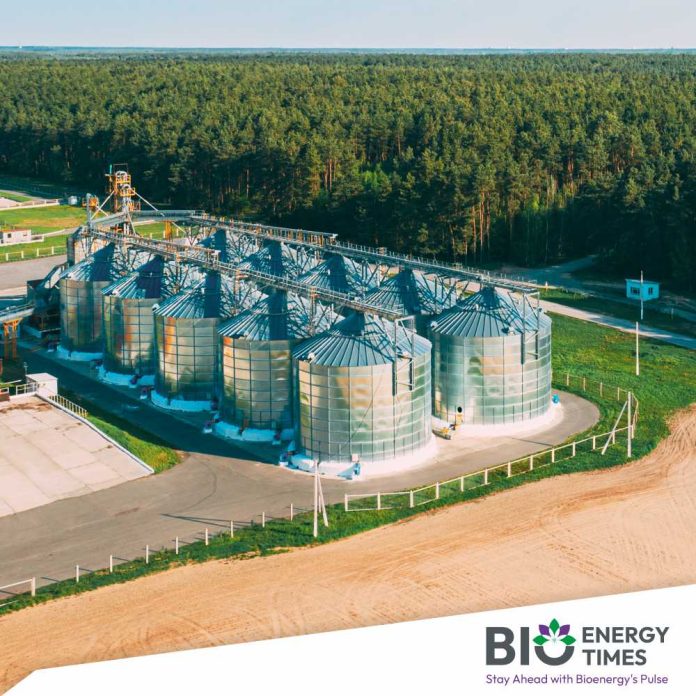Patiala: As part of its ongoing efforts to tackle stubble burning and promote clean energy, the Punjab government is accelerating its push to set up compressed biogas (CBG) plants using paddy straw. The Punjab Pollution Control Board (PPCB) has submitted a detailed stubble management plan for the current year, but the green energy drive is facing hurdles in rural areas where opposition from villages has become a growing concern, reports The Times of India.
CBG plants are being developed to reduce the burning of crop residue by turning it into fuel. According to the Punjab Energy Development Agency (PEDA), around 14.8 lakh tonnes of paddy straw is expected to be collected by 2025 through ex-situ management efforts. Out of this, 11.70 lakh tonnes will be used in 11 existing biomass power projects that have a combined capacity of 101.5 MW.
Alongside this, 60 CBG projects are in progress with a total capacity of 852.68 tonnes per day (TPD). Six of these plants—located in Khanna, Sangrur, Moga, Fatehgarh Sahib, Patiala, and Hoshiarpur—are already operational with a combined capacity of 107.48 TPD and are expected to process about 2.5 lakh tonnes of straw.
Four more plants with a total capacity of 45 TPD are expected to start by the 2025–26 financial year, adding another 0.60 lakh tonnes of straw processing. The remaining 50 projects, including major investments by HPCL, GAIL, Reliance, and BPCL, are expected to be launched within the next 18 to 24 months.
To scale up the initiative, PEDA has partnered with public sector units (PSUs) like GAIL, HPCL, and BPCL. Together, these PSUs will develop 22 CBG plants with a combined capacity of 280 TPD, using around 9.4 lakh tonnes of straw annually. GAIL has been allotted 10 plants with a capacity of 150 TPD (5 lakh tonnes of straw per year), HPCL will set up 10 plants totalling 100 TPD (3.4 lakh tonnes), and BPCL has been given two plants of 15 TPD each (1 lakh tonnes). Panchayat land has been identified and surveyed jointly by PEDA and the companies for leasing.
Despite the scale of the plan, the rollout has hit roadblocks at the grassroots level.
In Kakrala village of Patiala’s Nabha block, a proposed CBG plant was shelved after villagers unanimously opposed it last year. The plant was to be set up on 18 acres of village common land leased for 33 years to a private firm through PEDA. However, the gram sabha rejected the proposal and demanded the land be returned for farming use.
“Our village has already lost around 80 acres to private and industrial projects over the last five decades, and we haven’t seen any direct benefit. The remaining 144 acres are mostly used by landless farmers. Losing more land would have affected their livelihoods,” said Bhupinder Singh Kakrala, a resident.
Similar resistance has been reported from Bagga Kalan in Ludhiana and other districts. Villagers have raised concerns over pollution, lack of transparency, and unfulfilled promises of local jobs and development.
In Ghungrali village of Ludhiana, protests forced a CBG plant to shut down for nearly six months. It resumed operations only after the issue was resolved. “Our plant started in 2023 with a 12 TPD capacity, but currently we’re running at just 2 TPD. Still, we are providing free solid and liquid fertilizer to about 25 nearby villages, and farmers growing potatoes, maize, and paddy are benefiting from it,” said plant owner KK Kaushal.
A senior PPCB official, speaking anonymously, said that committees have been formed to address villagers’ doubts and explain the benefits of CBG plants, particularly in reducing stubble burning and providing renewable energy.
The government aims to increase paddy straw utilisation to 5.5 lakh tonnes this year through new CBG plants. However, addressing villagers’ concerns about land rights, pollution risks, and local employment will be key to making the programme successful.
Environmental expert Col Jasjit Singh Gill noted, “Villagers start resisting only after they notice problems like air or water pollution. These plants should be set up at least 4 km from villages, with proper treatment systems in place. The panchayat should be allowed to conduct inspections, and plant operators should avoid using raw materials that attract pests or spread disease.”
As Punjab tries to move toward cleaner energy and away from stubble burning, winning public trust at the village level may prove to be the most important step in the transition.














